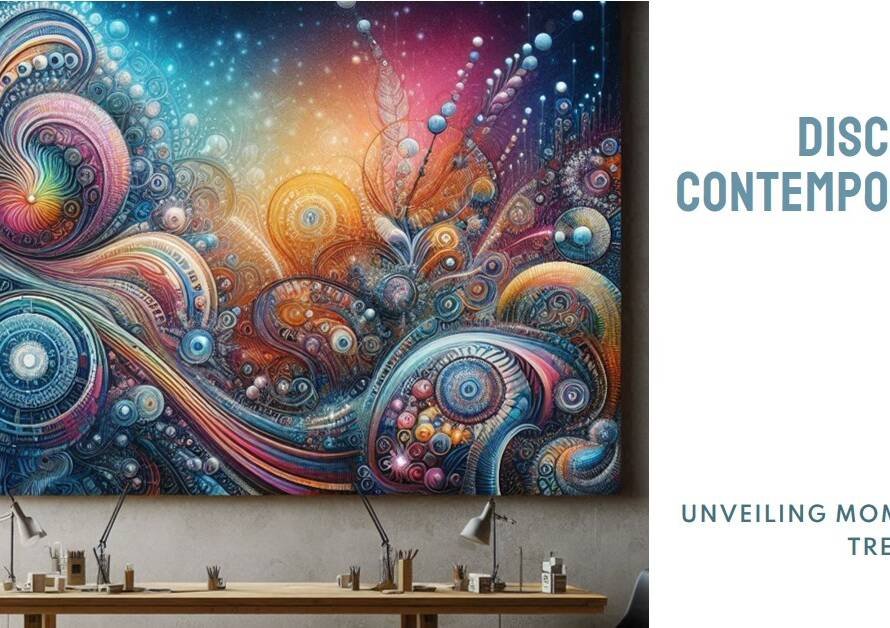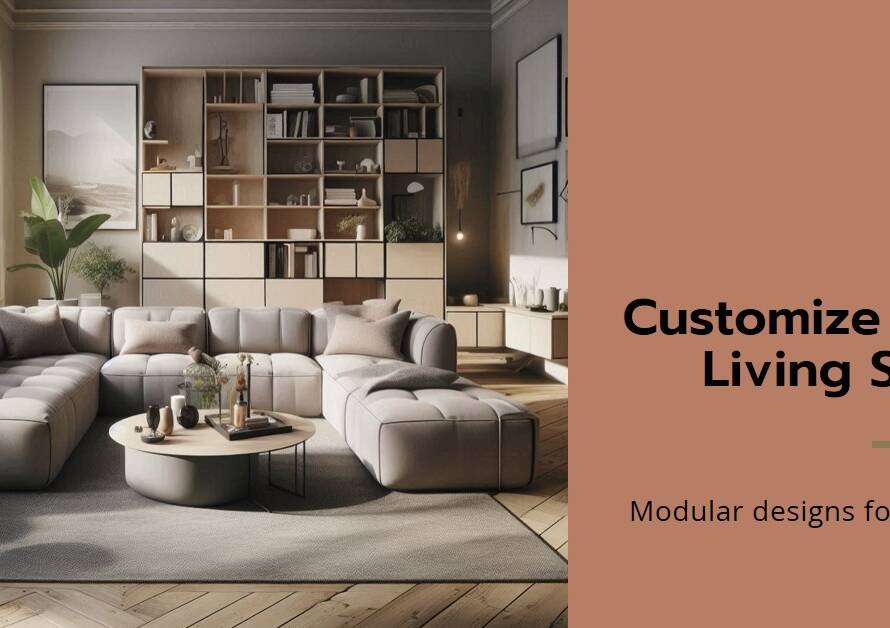
Table of Contents
In the dynamic landscape of design and architecture, Virtual Reality (VR) and Augmented Reality (AR) are poised to revolutionize the way we conceptualize, visualize, and execute projects. These immersive technologies offer unprecedented opportunities for designers, architects, and clients to experience spaces in a way that was previously unimaginable. In this comprehensive exploration, we delve into the transformative impact of VR and AR on the design process and how they are reshaping the future of the industry.
Section 1: The Emergence of Immersive Technologies in Design
The advent of VR and AR has heralded a new era of immersion and interactivity in the design field. These technologies enable designers to transcend the limitations of traditional 2D drawings and static renderings, allowing them to immerse themselves and their clients in virtual environments that feel lifelike and tangible. By donning a VR headset or using AR-enabled devices, users can explore and interact with architectural spaces in real-time, gaining a deeper understanding of scale, proportion, and spatial relationships.
Moreover, VR and AR empower designers to communicate their ideas more effectively and intuitively to clients and stakeholders. Instead of relying on abstract drawings or verbal descriptions, designers can now create immersive experiences that convey the look and feel of a space with unparalleled clarity and precision. This not only enhances client engagement and satisfaction but also streamlines the decision-making process by enabling stakeholders to visualize design concepts in context.
Section 2: Enhancing Design Collaboration and Communication
One of the most significant advantages of VR and AR in the design process is their ability to facilitate collaboration and communication among multidisciplinary teams. These technologies break down geographical barriers and enable designers, architects, engineers, and clients to collaborate in real-time, regardless of their physical location. Through virtual design reviews and interactive workshops, team members can explore design iterations, provide feedback, and make informed decisions collaboratively.
Furthermore, VR and AR promote inclusivity and accessibility in the design process by providing intuitive tools for visualizing and experiencing spaces from diverse perspectives. Designers can simulate various user scenarios and accessibility features, allowing them to design inclusive environments that cater to the needs of all users. By fostering a collaborative and inclusive design process, VR and AR pave the way for more innovative and responsive design solutions that address the needs and aspirations of a diverse range of stakeholders.
Section 3: Streamlining the Iterative Design Process
In traditional design workflows, the iterative process of refining and revising design concepts can be time-consuming and resource-intensive. However, VR and AR offer a more efficient and iterative approach to design iteration, enabling designers to rapidly prototype and test ideas in a virtual environment. By immersing themselves in VR simulations or overlaying AR models onto physical spaces, designers can evaluate design alternatives in real-time and iterate on them iteratively, resulting in more informed and optimized design solutions.
Moreover, VR and AR facilitate real-time visualization of design changes, allowing designers to assess the impact of modifications on spatial relationships, lighting conditions, and material selections instantly. This expedites the decision-making process and enables designers to make informed design decisions with confidence. By streamlining the iterative design process, VR and AR empower designers to explore a broader range of design possibilities and arrive at more innovative and responsive solutions.
Section 4: Transforming Client Engagement and Stakeholder Buy-In
Effective communication and client engagement are essential components of a successful design project. VR and AR offer powerful tools for engaging clients and stakeholders in the design process, enabling them to experience and interact with design concepts in a more meaningful and immersive way. Instead of relying on static renderings or blueprints, designers can present their ideas in VR walkthroughs or AR overlays, allowing clients to visualize the final outcome and provide feedback in real-time.
Furthermore, VR and AR promote stakeholder buy-in by fostering a sense of ownership and involvement in the design process. By actively engaging clients and stakeholders in the exploration and refinement of design concepts, designers can build consensus and alignment around the project vision, reducing the likelihood of misunderstandings or disputes later in the process. This not only enhances client satisfaction but also increases the likelihood of project success by ensuring that the final design meets the needs and expectations of all stakeholders.
Section 5: Expanding Design Possibilities with Immersive Storytelling
In addition to enhancing the design process, VR and AR open up new possibilities for immersive storytelling and experiential design. Designers can use these technologies to create immersive narratives and experiences that evoke emotion, inspire imagination, and foster a deeper connection with the built environment. Whether it’s simulating the experience of walking through a historic landmark, exploring a futuristic cityscape, or visualizing the impact of climate change on coastal communities, VR and AR enable designers to engage audiences in compelling and meaningful ways.
Moreover, VR and AR offer opportunities for interactive storytelling, allowing users to participate in and influence the narrative through their actions and choices. By incorporating gamification elements, branching narratives, and interactive puzzles, designers can create immersive experiences that captivate and engage audiences of all ages. Whether it’s educational exhibits, cultural installations, or branded experiences, VR and AR provide a versatile canvas for creativity and innovation in design storytelling.
Section 6: Democratizing Design Access and Education
One of the most promising aspects of VR and AR is their potential to democratize access to design tools and education. These technologies lower the barriers to entry for aspiring designers and architects by providing intuitive and affordable tools for creating and experiencing spatial designs. Whether it’s designing a dream home, exploring architectural history, or learning about sustainable design principles, VR and AR offer immersive learning experiences that inspire creativity and curiosity.
Furthermore, VR and AR enable designers to reach broader audiences and engage communities in the design process. By creating accessible and inclusive design experiences, designers can empower individuals from diverse backgrounds to participate in shaping the built environment and advocating for design solutions that address their needs and aspirations. This fosters a more inclusive and participatory approach to design, ensuring that the voices and perspectives of all stakeholders are heard and valued.
Section 7: Redefining Architectural Visualization and Marketing
In the realm of architectural visualization and marketing, VR and AR are redefining the way designers and developers showcase and market their projects. Instead of relying solely on traditional renderings or physical models, developers can create immersive VR experiences that allow potential buyers to explore and interact with properties before they are built. By offering virtual property tours and interactive walkthroughs, developers can showcase the unique features and amenities of their projects in a compelling and engaging way.
Moreover, VR and AR enable designers to create hyper-realistic visualizations that convey the look and feel of a space with unprecedented accuracy and detail. By leveraging advanced rendering techniques and immersive technologies, designers can create photorealistic VR environments that transport viewers to virtual worlds that feel indistinguishable from reality. This not only enhances the marketing appeal of architectural projects but also provides clients and stakeholders with a more immersive and visceral understanding of the design vision.
Section 8: Addressing Ethical and Social Implications
As VR and AR technologies continue to evolve and proliferate, it’s essential to consider the ethical and social implications of their widespread adoption in the design industry. These technologies raise important questions about privacy, data security, and digital equity, as well as the potential for unintended consequences such as addiction, isolation, and sensory overload. Designers and developers must prioritize ethical considerations and adopt responsible design practices that prioritize user safety, privacy, and well-being.
Moreover, VR and AR have the power to exacerbate existing inequalities and disparities in access to technology and resources. As designers embrace these technologies to create immersive experiences, they must ensure that their designs are inclusive and accessible to individuals with diverse abilities and backgrounds. This requires proactive efforts to design for diversity, equity, and inclusion, as well as ongoing engagement with communities to understand their needs and preferences.
Section 9: Embracing Innovation and Experimentation
In the rapidly evolving landscape of VR and AR, innovation and experimentation are key to unlocking the full potential of these transformative technologies. Designers and developers must embrace a mindset of curiosity and exploration, continuously pushing the boundaries of what’s possible and imagining new ways to leverage VR and AR in the design process. Whether it’s experimenting with new interaction paradigms, integrating biometric feedback, or exploring the potential of AI-driven design tools, there are endless opportunities for innovation and discovery in the world of immersive design.
Moreover, designers must be willing to embrace failure and learn from their mistakes as they navigate the uncharted territory of VR and AR design. By fostering a culture of experimentation and iteration, designers can iterate rapidly, test hypotheses, and refine their ideas based on real-world feedback. This iterative approach not only accelerates the pace of innovation but also fosters a culture of continuous learning and improvement that drives progress in the field of immersive design.
Section 10: Looking Towards the Future of Immersive Design


As we look towards the future of design, it’s clear that VR and AR will play an increasingly central role in shaping the way we envision, create, and experience the built environment. These immersive technologies hold the promise of revolutionizing the design process, democratizing access to design tools and education, and fostering more inclusive and participatory design practices. By embracing the transformative power of VR and AR, designers and architects can unlock new dimensions of creativity, collaboration, and innovation, paving the way for a more immersive, equitable, and sustainable future.


